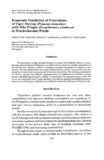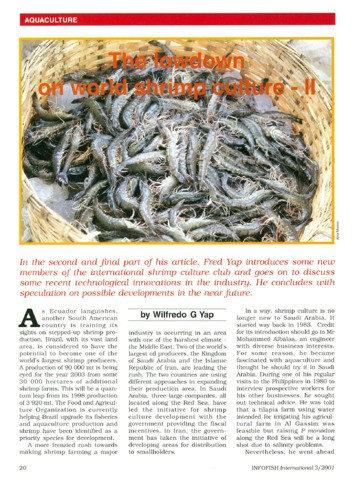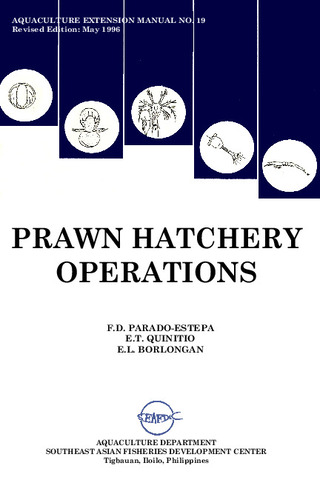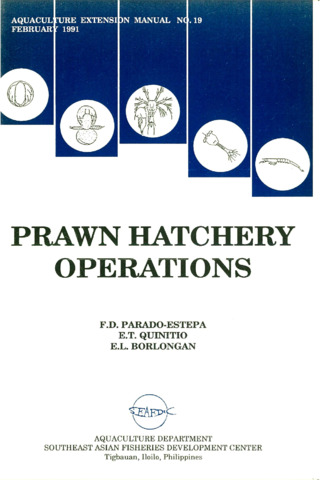Economic feasibility of polyculture of tiger shrimp (Penaeus monodon) with Nile tilapia (Oreochromis niloticus) in brackishwater ponds
Share
Abstract
The polyculture of tiger shrimp (Penaeus monodon) with milkfish (Chanos chanos) has been practiced in the Philippines, bit little is known about the possible polyculture of the shrimp with the tilapias in spite of increasing consumer acceptance for tilapias in the country. Shrimp monoculture, two rates of Oreochromis niloticus monoculture, and two polyculture treatments were compared for economic feasibility. The stocking combination of 6,000 ha-1 shrimp with 4,000 ha-1 tilapia generated the highest total production and net income with 283.57 kg ha-1 and P11,849 ha-1, respectively. Two crops per year provided a 70% return on investment and 1.2 years payback. A sensitivity analysis indicated that shrimp polyculture with tilapia is profitable up to a 20% decrease in the selling price of both species.
Suggested Citation
Samonte, G. P. B., Agbayani, R. F., & Tumaliuan, R. E. (1991). Economic feasibility of polyculture of tiger shrimp (Penaeus monodon) with Nile tilapia (Oreochromis niloticus) in brackishwater ponds. Asian Fisheries Science , 4(3), 335-343. http://hdl.handle.net/10862/1350
Subject
Taxonomic term
Collections
- AQD Journal Articles [1249]
Related items
Showing items related by title, author, creator and subject.
-
The lowdown on world shrimp culture - II
Yap, Wilfredo G. (INFOFISH, 2001)This paper introduces some new members of the international shrimp culture club and goes on to discuss some recent technological innovations in the industry, particularly the polyculture of tilapia (mainly Oreochromis ... -
Prawn hatchery operations
Parado-Estepa, Fe D.; Quinitio, Emilia T.; Borlongan, Emeterio L. (Aquaculture Department, Southeast Asian Fisheries Development Center, 1996-05)The manual, an updated version of the 1984 SEAFDEC/AQD manual, presents the underlying principles and step-by-step instructions of prawn larval and post-larval rearing. The techniques described are not only applicable to ... -
Prawn hatchery operations
Parado-Estepa, Fe D.; Quinitio, Emilia T.; Borlongan, Emeterio L. (Aquaculture Department, Southeast Asian Fisheries Development Center, 1991-02)The manual, an updated version of the 1984 SEAFDEC/AQD manual, presents the underlying principles and step-by-step instructions of prawn larval and post-larval rearing. The techniques described are not only applicable to ...




